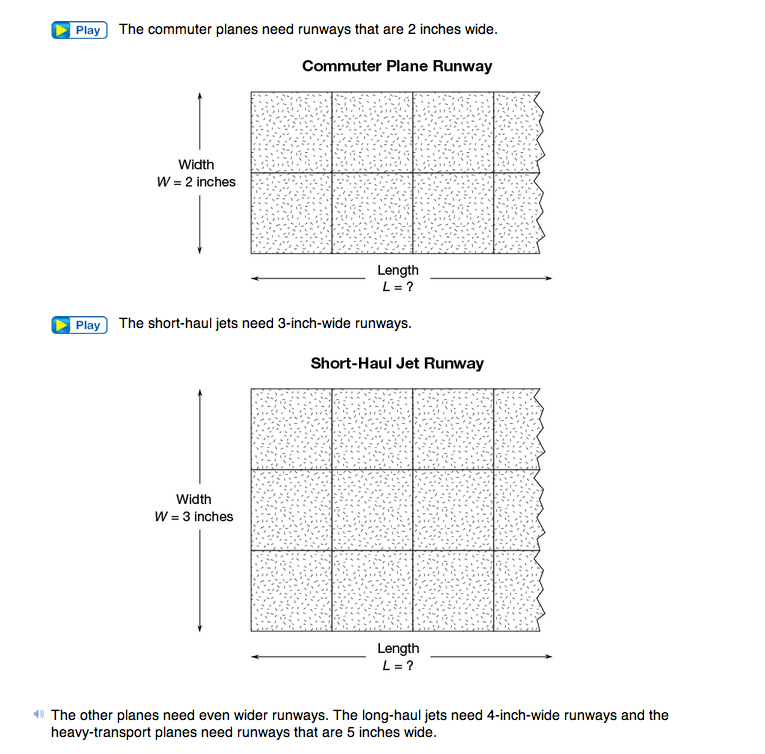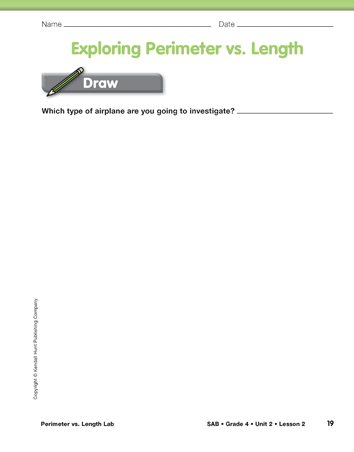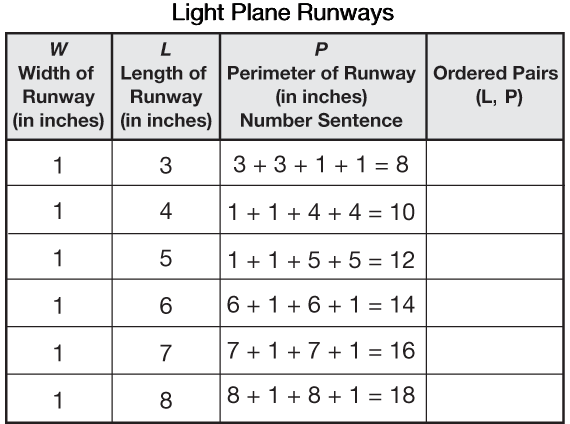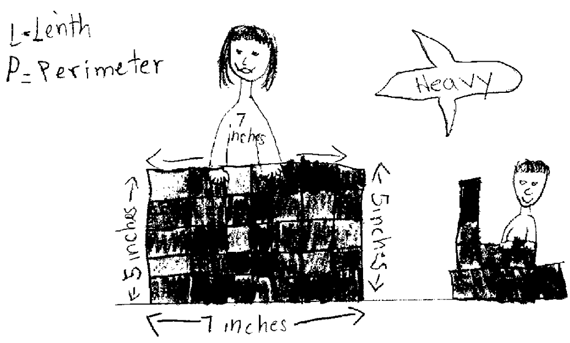Perimeter vs. Length Lab
Est. Class Sessions: 4Developing the Lesson
Part 1: Introduce Lab Scenario
Define the Variables. Read the introductory section on the Perimeter vs. Length Lab pages in the Student Guide. Discuss Myrna's problem and what it means to plan or design runways.
Use the following discussion questions:
Once students understand that the width of each runway remains constant in their investigation, you can define this as a fixed variable, that is, a variable whose value does not change throughout the investigation.
Model the Process with Light Plane Runways. Make several light plane runways on a class display using square-inch tiles. Point out to the students that all the light plane runways will have the same width, one inch. The width will be the same when finding the perimeter for runways with different lengths, so long as you are working with only light plane runways.
Ask each group of students to find the perimeter of one of the runways that you displayed. Have them write number sentences that show how they think about the problem and how the numbers relate to the sides of the runway.
Have each group record the widths, lengths, and perimeters of each of the runways on a display of a Four-Column Data Table as shown in Figure 1. Even though the width remains the same for each type of runway, it should be included in the table so students are reminded that it is necessary for calculating perimeter. Note that students will use the fourth column of the data table to write ordered pairs for graphing in Part 3.
As students write their number sentences, ask them to:
Examine the patterns in the data table the class creates for Light Plane Runways.
Ask:
Draw the Picture for the Assigned Runway. Organize students into groups of 3–4 and assign each group one type of runway: commuter plane, short-haul jet, long-haul jet, or heavy transport. As you assign each group a type of plane, discuss the width of their runways and remind them that all their runways will be that width.
Use the Draw section of the Perimeter vs. Length Lab pages in the Student Guide to help students decide what they will include in their picture. Ask students to read and discuss Questions 1–3 in their groups. If a group is having difficulty getting started, the following discussion prompts can be used to help clarify what should be included in their picture.
Ask:
Emphasize that a good picture shows the equipment, identifies the variables, and communicates the procedures as shown in the student drawing in Figure 2. Note that the square-inch tiles, the type of plane, the width, and the variables (P for the perimeter of the runway and L for its length) are clear in the picture.
When students are ready to begin their drawings, they will use the Draw section of the Exploring Perimeter vs. Length pages in the Student Activity Book to record their work.
Some students may ask, “Do the larger planes need longer runways than the smaller planes?” This is an excellent question. The Antopolis airport planning commission has not decided how long the runways will be, but it is possible that the runways for the bigger airplanes will have to be longer as well as wider. Another interesting question is whether smaller planes can land on runways meant for larger planes. The answer is that indeed they can, but it would clog the runways for the larger planes.


















